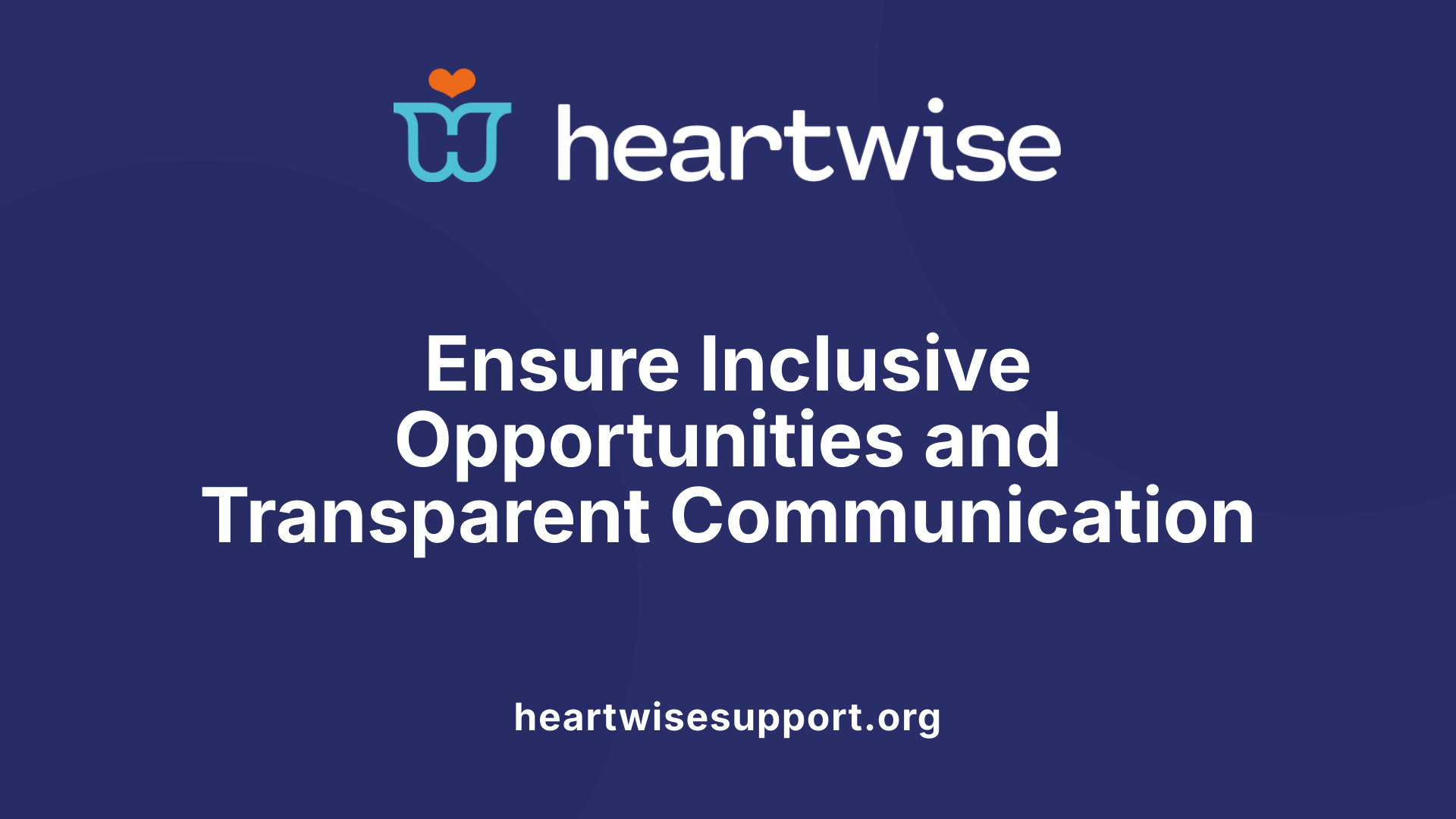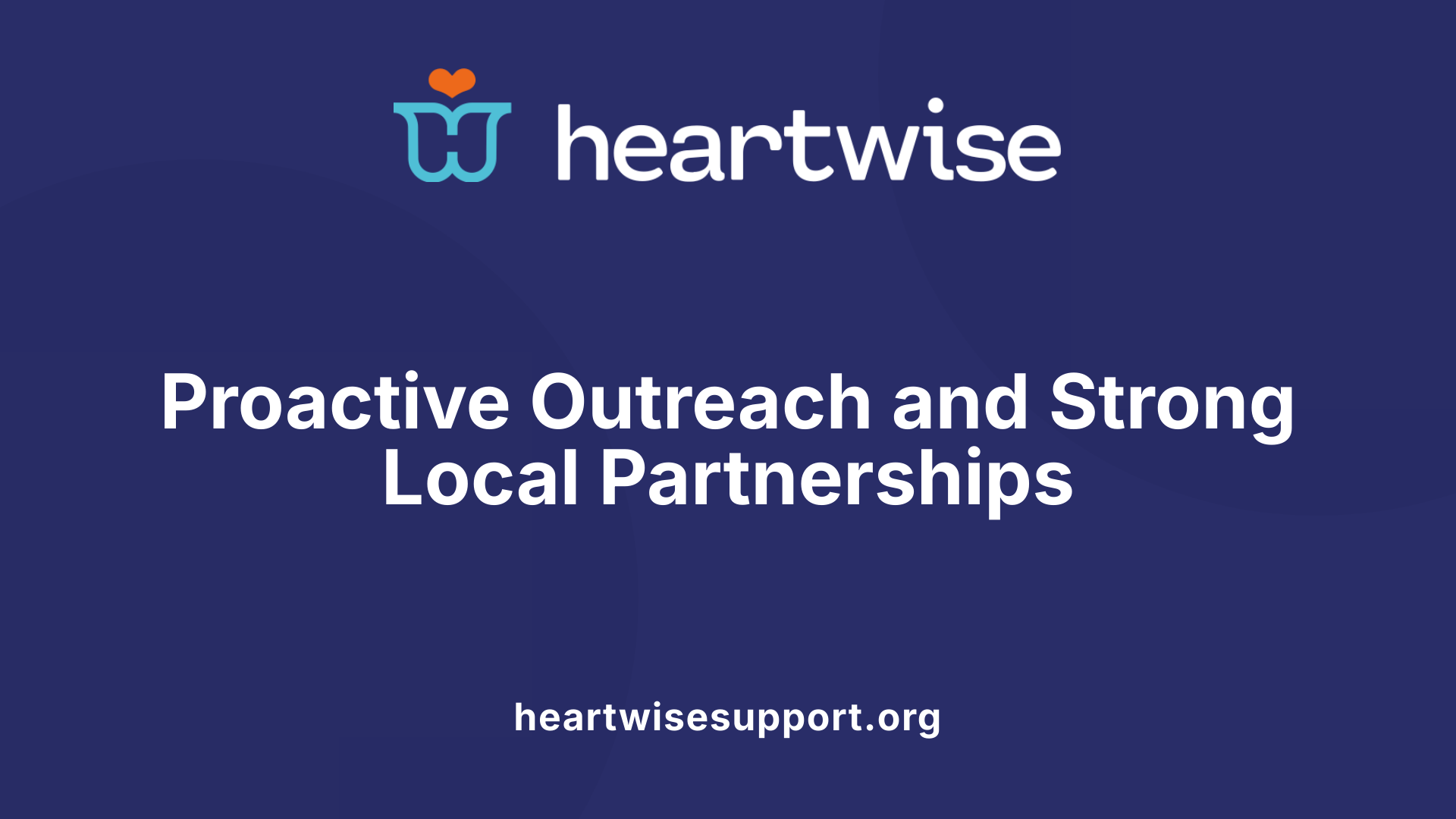Understanding the Foundations of Inclusive Community Engagement
Social inclusion is vital for thriving communities where every individual feels valued, connected, and empowered. Effective community engagement is the cornerstone of fostering social cohesion, reducing inequalities, and creating opportunities for all community members—especially the underrepresented and marginalized—to participate meaningfully. This article delves into the core elements, methods, frameworks, and real-world examples of how community engagement can be harnessed to promote social inclusion, addressing barriers and leveraging diverse assets for sustainable development.
Key Elements of Community Engagement for Social Inclusion

What are the key elements of community engagement that promote social inclusion?
Fostering a sense of belonging is fundamental in community engagement. This involves establishing clear boundaries and shared symbols that help individuals feel like they are part of a collective. Creating spaces where community members see themselves as connected and valued builds emotional safety, encouraging participation and a sense of membership.
Empowerment through influence is another crucial factor. When community members are given meaningful opportunities to contribute to decision-making processes, trust and mutual respect are strengthened. This sense of influence makes individuals feel their voices matter, motivating ongoing engagement.
Providing opportunities that meet diverse needs helps reinforce members’ commitment and satisfaction. This includes offering various participation modes, such as online surveys, hybrid meetings, and multilingual communication tools, which ensure inclusive access for all community members.
Shared emotional bonds also play a vital role in social inclusion. Engaging in collective experiences, cultural events, or spiritual activities helps forge strong connections among members. These shared histories and emotional ties create cohesion and foster a sense of trust and solidarity.
Transparency and respectful communication underpin these elements. Clear, consistent messaging, accessible information, and open dialogue make community members feel respected and heard. Building trust takes precedence when community processes are transparent and inclusive.
Ultimately, these interconnected elements—belonging, influence, shared bonds, and transparent communication—work together to create an inclusive environment. Such spaces are welcoming, where every member feels valued, connected, and motivated to participate actively. This holistic approach not only promotes social cohesion but also ensures that community engagement efforts lead to equitable and meaningful social inclusion.
Methods for Engaging Diverse and Underrepresented Communities

What are effective methods for involving diverse and underrepresented groups in community participation?
Involving diverse and underrepresented groups in community engagement requires a multi-faceted approach that respects the community’s unique needs and barriers. First, utilizing accessible and multilingual communication channels helps ensure that information reaches all community members. This includes translating materials into languages spoken by the community, using simple language, and incorporating relatable visuals.
Combining online and offline strategies—known as hybrid engagement—addresses various preferences and accessibility levels. For example, community meetings can be held both in person and via live streams, and surveys can be distributed through email, social media, or paper forms, depending on the community.
Proactive outreach is vital. This means going directly to community centers, faith-based organizations, schools, and local events where underrepresented groups already gather. Targeted programs, such as support groups or tailored workshops, can also lower participation barriers.
Building trust relies on transparency and consistency. Regular updates, clear explanations of how input influences decisions, and follow-through on commitments foster credibility. Personal engagement approaches, like personalized invitations or one-on-one conversations, create a welcoming environment.
Partnerships play a crucial role. Collaborating with community leaders, NGOs, and local institutions ensures cultural relevance and respect. These organizations can act as liaisons and advocates, helping to tailor engagement efforts and verify inclusivity.
Providing multiple participation avenues, including face-to-face events, digital platforms, and adapted activities for vulnerable groups, ensures broad access. Also, employing flexible schedules and accessible locations accommodates different needs.
Finally, continual learning and adaptation are essential. Evaluating what works through feedback and adjusting strategies accordingly helps sustain engagement and promotes ongoing, equitable participation.
In summary, effective community involvement combines accessible communication, hybrid engagement methods, targeted outreach, trust-building, and strong local partnerships. These strategies create an inclusive environment where all community members can contribute meaningfully to local decision-making and development.
Urban Planning and Development Strategies for Inclusion
How can urban planning and community development foster social inclusion?
Urban planning plays a vital role in promoting social inclusion by designing public spaces that are accessible, safe, and inclusive for everyone. Well-planned parks, plazas, and community areas should accommodate people of all ages, abilities, and cultural backgrounds. This involves thoughtful features like ramps, wide pathways, sensory-friendly zones, and multilingual signage.
Engaging residents—particularly marginalized groups—in the planning process ensures that their specific needs and preferences are understood and addressed. Participatory planning methods, such as community workshops, surveys, and focus groups, help build trust and a sense of ownership among community members. When residents feel their voices are heard and valued, it encourages ongoing engagement and cooperation.
Implementing inclusive zoning policies and affordable housing options reduces socioeconomic segregation. Mixed-income neighborhoods foster diverse interactions, break down stereotypes, and promote mutual understanding. By encouraging diverse communities to live side-by-side, cities can cultivate social cohesion.
Developing social infrastructure, including community centers, healthcare clinics, schools, and cultural venues, enhances access to essential services while providing opportunities for social interaction. These hubs become focal points where residents can participate in recreational, educational, and cultural activities.
Additional measures, such as creating neighborhood identity spaces—like public art installations and cultural landmarks—help strengthen community bonds. Promoting local economic opportunities, supporting small businesses, and ensuring safe and efficient street networks further promote inclusivity and accessibility.
Overall, the synergy of accessible infrastructure, inclusive policies, and active community participation creates urban environments that nurture social cohesion, reduce inequalities, and ensure all residents can thrive.
Frameworks, Tools, and Strategies for Inclusive Engagement
What frameworks or tools can facilitate inclusive community engagement?
Implementing effective community engagement requires the right models and tools that prioritize inclusivity and responsiveness to diverse needs. One prominent framework is the Global Exchange on Migration and Diversity’s model, which focuses on understanding community dynamics, fostering trust, and personalizing outreach to ensure participation from all groups. This approach emphasizes respect for cultural differences and promotes equitable involvement.
Another valuable resource is the Community Engagement Toolkit, which provides structured methods for identifying participation barriers, developing targeted strategies, and measuring success. These toolkits often include checklists, survey templates, and action plans designed to enhance engagement efforts.
Utilizing mixed-method approaches significantly broadens outreach. This includes online platforms like social media and digital surveys, alongside physical venues such as community centers or public events. Translating materials into multiple languages and ensuring venues are physically accessible also removes common participation barriers.
Building partnerships with trusted community institutions—such as cultural organizations, faith groups, or local nonprofits—can greatly enhance credibility and inclusiveness. These organizations already have established relationships within diverse communities and can serve as critical bridges to engagement.
Sustaining inclusive participation also depends on transparency and ongoing relationship management. Regular communication, feedback loops, and adaptability in response to community input help foster trust and long-term involvement.
In summary, combining structured frameworks like those from the Community Engagement Toolkit with innovative tools, strategic partnerships, and adaptable communication methods creates a robust foundation for inclusive community engagement. These combined strategies ensure that all community voices are heard and valued, promoting equitable participation and social cohesion.
Successful Initiatives and Case Studies in Social Inclusion
Can you provide examples of successful social inclusion initiatives that involve community participation?
Effective social inclusion initiatives are rooted in active community participation. One notable example is Banyule City Council's art projects, where First Nations artist Merindah-Gunya collaborated with the community to produce public artworks promoting reconciliation and a sense of belonging. These projects foster cultural understanding and include diverse voices through creative expression.
Glen Eira City Council employed a mix of digital and in-person engagement strategies, such as broad surveys and targeted activities, to ensure voices from different segments of the community are heard. These efforts include multilingual communication and accessible services, connecting culturally diverse groups and those with limited digital access.
Port Adelaide Enfield exemplified a hybrid engagement approach by creating dedicated platforms for residents with disabilities. This enables inclusive participation in community planning, making sure that everyone’s needs are considered.
Northern Beaches Council’s Multicultural Inclusion Plan translated materials into major languages and trained cultural leaders to run inclusive workshops. This strategy led to over 130 submissions from diverse communities, reflecting broad community input. It demonstrates how proactive outreach and culturally sensitive facilitation can deepen community involvement.
Community-based programs such as social skills development and peer support groups further exemplify successful inclusion. For example, peer support groups like Brisbane Hot Topics provide safe environments for people with disabilities to share experiences and build friendships, boosting confidence and social connectedness.
These initiatives highlight the importance of proactive outreach, accessible participation environments, and collaboration with various community sectors to foster lasting, inclusive community development.
| Initiative | Approach | Impact | Additional Notes |
|---|---|---|---|
| Banyule City Council Art Projects | Public art collaborations with First Nations artists | Promotes reconciliation and cultural inclusion | Uses creative expression to engage community |
| Glen Eira City Council Engagement | Online surveys, targeted activities, multilingual outreach | Embraces diverse cultural groups | Combines digital and face-to-face approaches |
| Port Adelaide Enfield | Hybrid online and offline participation platform | Supports residents with disabilities | Ensures accessibility in planning processes |
| Northern Beaches Multicultural Plan | Translated materials, cultural leader training | Increased representation from diverse groups | Facilitates inclusive community workshops |
| Brisbane Hot Topics Peer Support Group | Safe peer environment | Builds friendships, social skills | Focuses on mental health and social inclusion |
These examples demonstrate the value of inclusive approaches across different sectors, emphasizing community engagement, cultural sensitivity, accessibility, and active participation.
Barriers to Social Inclusion and Addressing Them through Community Engagement
What are common barriers to social inclusion and how can community engagement address them?
Social inclusion is a complex goal that faces multiple challenges rooted in attitudes, environment, policies, and social structures. Addressing these barriers effectively requires a comprehensive understanding of the different forms they take.
One major obstacle is attitudinal barriers. Stigma, prejudice, and discrimination often prevent marginalized groups from participating fully in societal activities. These biases can manifest in everyday interactions, impacting employment opportunities, social relationships, and access to services.
Physical barriers are also prevalent, including inaccessible buildings, transportation issues, and communication challenges. These physical obstacles restrict mobility and limit participation for individuals with disabilities or those living in remote areas.
Structural barriers include policies and regulations that favor certain groups over others, along with economic inequalities that hinder access to necessary resources. Without inclusive policies and equitable resource distribution, disparities in income, education, and employment persist, deepening social divides.
Social barriers further exacerbate exclusion, especially when disparities exist in employment, education, and healthcare. These disparities promote segregation and reduce opportunities for meaningful engagement in community life.
Community engagement can serve as a powerful tool to overcome these barriers. Through awareness campaigns, communities can challenge negative attitudes and stereotypes, fostering a culture of acceptance and understanding.
Developing accessible infrastructure and transportation options is crucial in removing physical obstacles. For example, designing public spaces that adhere to universal access principles ensures participation regardless of physical ability.
Policy reforms are necessary to establish inclusive frameworks that prioritize social sustainability, such as implementing anti-discrimination laws, enhancing transportation networks, and ensuring equitable service delivery.
Urban planning strategies focused on integrating marginalized communities, improving connectivity, and fostering diverse public spaces contribute significantly to reducing structural inequalities.
Community-led solutions—such as local initiatives, volunteer programs, and partnerships with civic organizations—lead to tailored approaches that directly address specific barriers faced by communities.
Involving stakeholders in policy development and urban planning ensures that the voices of vulnerable populations are heard and considered. This inclusive approach encourages trust and cooperation.
Ultimately, making societal changes involves not only policy and infrastructure adjustments but also a cultural shift that values diversity and promotes social equity. Active community engagement, ongoing education, and policy advocacy are central to creating environments where everyone has equal opportunity to participate and thrive.
Designing Community Projects for Inclusion and Impact
How can community projects be designed to enhance social inclusion?
Creating inclusive community projects requires intentional strategies that actively involve diverse groups from the outset. Involving community members through multiple channels—such as online surveys, social media, in-person meetings, and focus groups—ensures broad participation, capturing a wide range of perspectives.
To address barriers to participation, projects should incorporate accessibility features based on Universal Design principles. This includes providing adaptive equipment, accessible facilities, and communication tools that cater to individuals with disabilities. Offering materials in multiple languages and simplifying language ensure inclusivity for non-native speakers and those with varying literacy levels.
Building community capacity is vital. This involves targeted outreach tailored to underrepresented groups, as well as educational initiatives and partnerships with trusted local organizations. Engaging community leaders and stakeholders promotes trust and encourages ongoing involvement.
Transparency and consistent engagement foster trust and ensure community voices are reflected in project development. Providing clear information about goals, processes, and outcomes helps reduce skepticism and increase buy-in.
Addressing specific needs and barriers—such as transportation challenges, safety concerns, or cultural differences—by providing tailored solutions creates an environment where all community members feel valued and able to contribute.
Promoting social roles and contributions, like volunteer opportunities or leadership positions, further supports social inclusion. When people see their roles as meaningful and impactful, they are more likely to stay engaged.
Finally, ongoing monitoring and evaluation of projects help identify areas for improvement and demonstrate accountability. Sustained efforts through feedback loops and community-led adjustments ensure projects remain relevant, effective, and inclusive.
In sum, well-designed community projects foster social inclusion by actively engaging diverse voices, removing participation barriers, ensuring accessibility, and empowering communities to lead change—building environments where everyone feels they belong and can thrive.
The Role of Community Engagement in Promoting Health Equity and Cultural Participation
In what ways can community engagement support health equity and cultural participation?
Community involvement plays a crucial role in advancing health equity and fostering cultural participation by actively engaging a diverse range of community members in decision-making. When communities are genuinely involved, their unique needs, values, and cultural assets are recognized, respected, and integrated into planning and program development.
Effective engagement strategies leverage community strengths, including cultural wealth—such as social, linguistic, familial, and resistance capital—to build authentic partnerships. These partnerships help to shift traditional power dynamics, empowering marginalized groups to influence policies and services that directly impact their lives.
Building trust is fundamental. Transparent communication and ongoing collaboration create relationships where community members feel valued and heard. This sense of mutual respect encourages sustained participation and advocates for systemic change.
Culturally responsive health programs are designed through community insights, making interventions more relevant, acceptable, and effective. For example, incorporating cultural beliefs and practices can improve health outcomes and increase acceptance of health initiatives.
Addressing structural barriers—like language obstacles, transportation issues, or discrimination—is a vital aspect of community engagement. By understanding and targeting these challenges, tailored solutions such as multilingual outreach, flexible service hours, and community-led transportation programs can be developed.
Overall, community engagement supports a shift from top-down service delivery to inclusive, participatory processes. This transformation fosters health equity by ensuring that all community members, especially those historically excluded, have meaningful opportunities to influence health and cultural initiatives.
This approach not only leads to better health outcomes but also promotes active cultural participation, community empowerment, and social cohesion. When community voices are centered in decision-making, it lays the foundation for sustainable and equitable social change.
Fostering Sustainable and Equitable Communities through Active Engagement
Building truly inclusive communities requires deliberate effort, innovative approaches, and ongoing commitment from all stakeholders. By understanding and implementing the essential elements of engagement—trust, influence, shared emotional bonds—and employing diverse, accessible methods, communities can break down barriers and foster social cohesion. Urban planning that prioritizes inclusivity, coupled with frameworks and tools that facilitate participation, amplifies marginalized voices and addresses systemic inequalities. Successful case studies highlight the importance of culturally sensitive practices, active partnerships, and community-led initiatives. Addressing obstacles like prejudice, physical access, and policy barriers with proactive solutions paves the way for communities where everyone has a genuine stake and shared ownership. Ultimately, fostering engagement rooted in respect and empowerment is essential for advancing social inclusion, health equity, and regional development, creating resilient communities prepared for future challenges.
References
- Three Strategies to Increase Community Engagement Inclusion
- Inclusive community engagement: 10 good practices - Go Vocal
- Fostering Social Inclusion and Community Engagement
- Inclusive Success Stories for Community Engagement
- 8 Community Engagement Strategies in Parks and Rec - CivicPlus
- [PDF] Fostering Social Inclusion and Community Engagement - Mass.gov
- Expanding Community Engagement Reach with Inclusive Outreach
- 5 Steps to Promoting Inclusive Community Engagement
- Implementing Community Engagement in Programs











